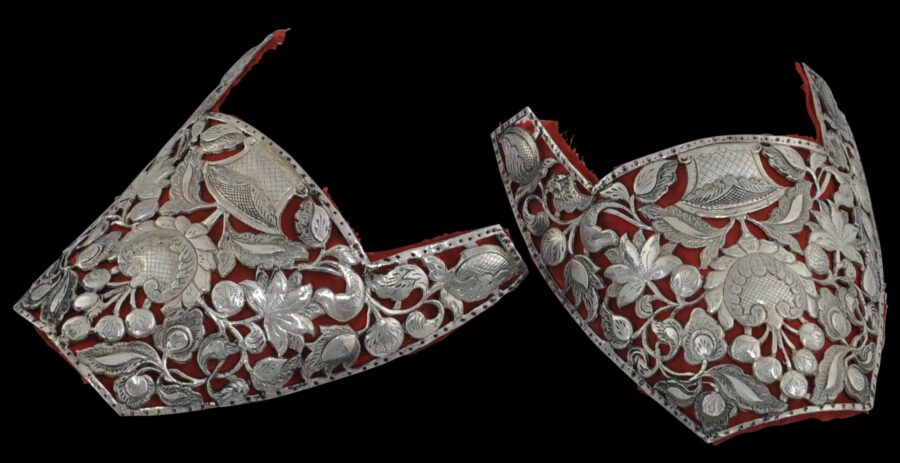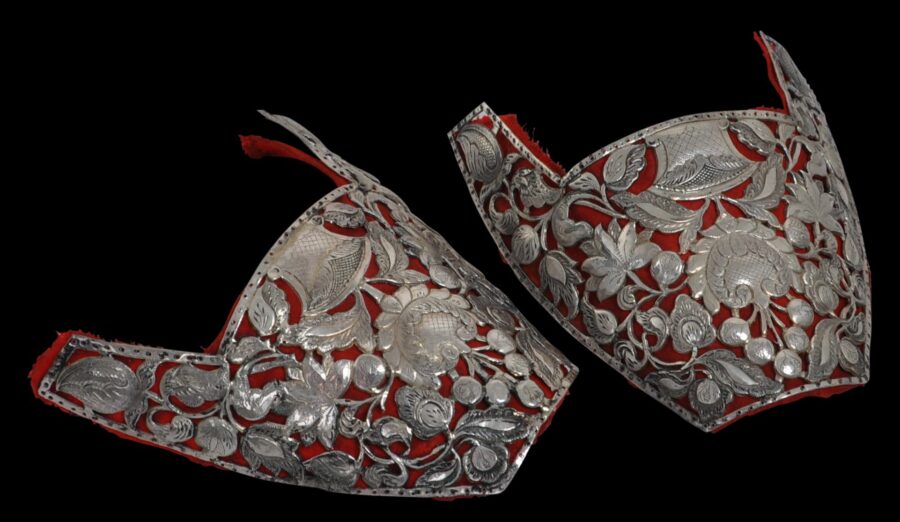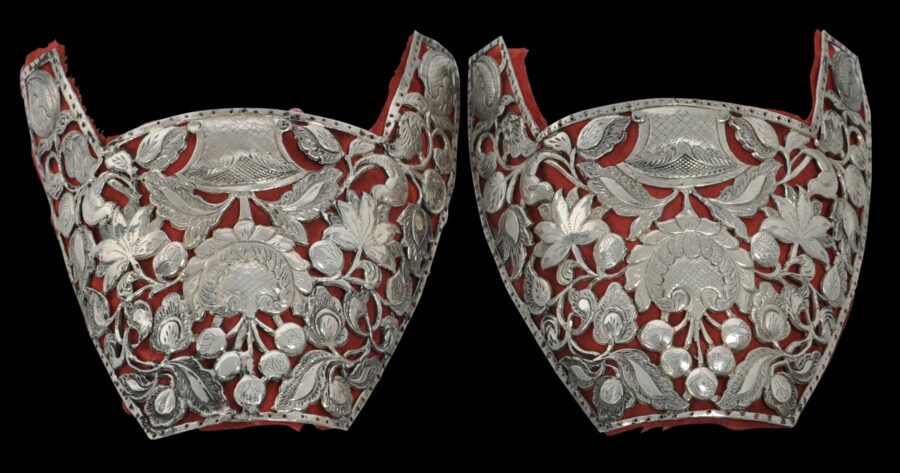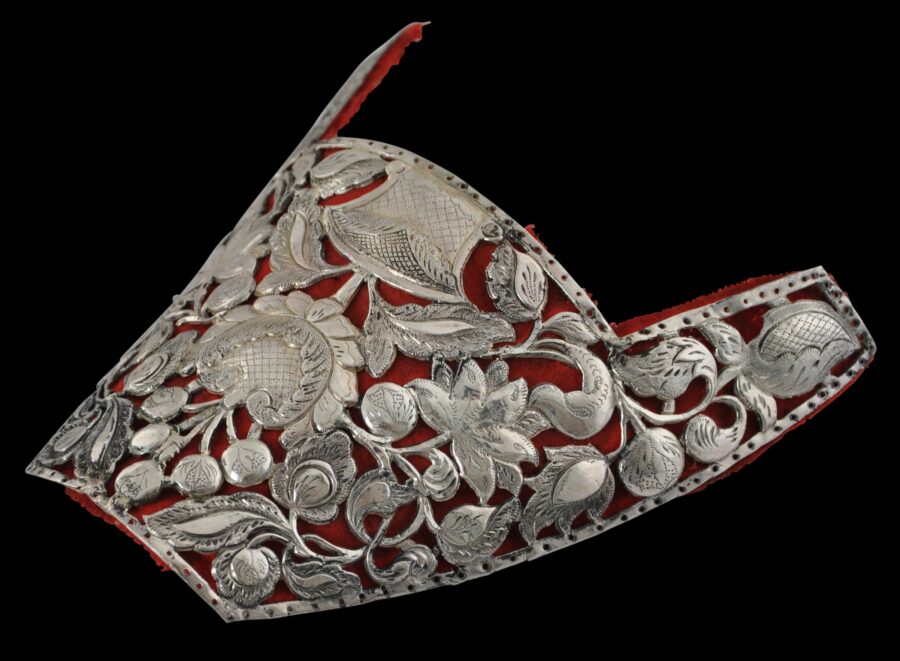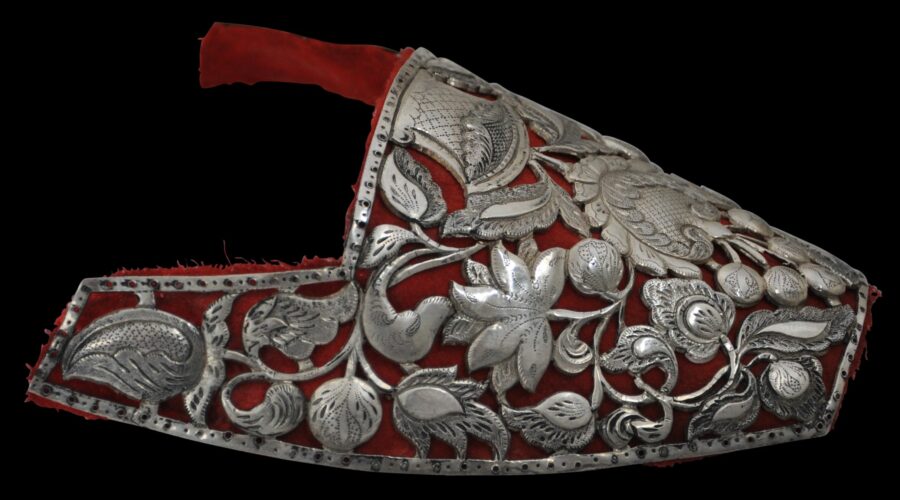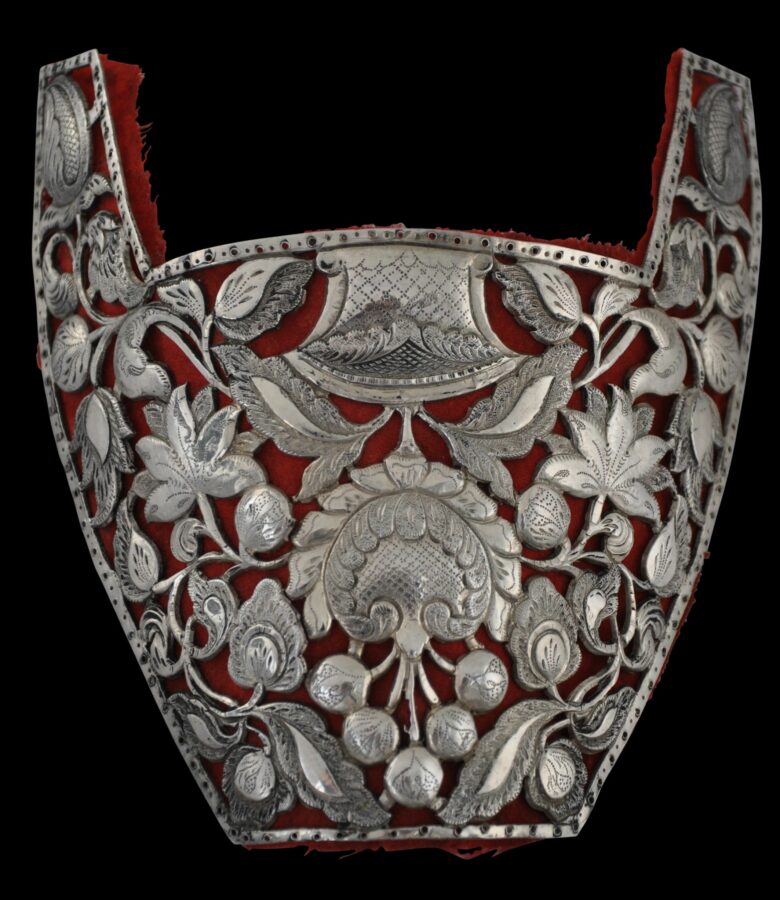This pair of shoe toe coverings comprises fine, pierced and engraved high-grade silver frames attached to red cotton backing. The coverings are decorated with abundant pomegranate-style fruits and leaves. The array has a fluidity suggestive of embroideries imported from southern China.
Bolivian native officials, called curacas, wore hats and other costume components decorated with such applied silver plaques, during festivals and dances.
The silver was mined in and around the Cerro de Potosí mountain. The abundance and importance of silver was emphasised by its use to decorate the festival costumes of the officials.
The curacas were appointed by the Spanish colonial overseers whose primary interest in Bolivia was its natural silver riches, which was mined and exported back to Spain and to Spanish colonies in Asia and elsewhere.
A hat with similar silver fittings is in the Brooklyn Museum, New York.
The examples here are in excellent condition.
References
Phipps, E. et al, The Colonial Andes: Tapestries and Silverwork 1530-1830, Metropolitan Museum of Art/Yale University Press, 2004.
Taullard, A., Plateria Sudemericana, Ediciones Espeula de Plata, 2004.


